
As you learn more and more songs on guitar, sooner or later you’ll run into a sus chord. Let’s take a look at basic sus chords so that you can understand how to play them and how to use them in your music.
What is a sus chord
A sus chord, more formally called a suspended chord, is a musical chord that omits the 3rd degree of the major scale and replaces it with the 2nd (sus2) or the 4th (sus4) degree.
While other, more complicated sus chords exist, these are the two most common. Especially for guitar players, the sus2 and sus4 chords are used frequently based off of the open chords A, D, and maybe somewhat less often, C. Those three chords provide easy access to both of the suspended variants.
The other two open major guitar chord shapes–E, and G–offer somewhat more complicated versions of their suspended chords.
You’ll need to understand scale intervals:
What is the anatomy of a sus chord?
As I said above, the sus chord has no 3rd note. Remember, it’s the 3rd degree of the scale that gives the chord its major or minor tonality. A natural, or major 3rd makes the chord a major chord. On the other hand, a flat, or minor 3rd makes the chord a minor chord.
But in a sus chord, we omit the 3rd altogether and replace it with either the 2nd (sus2) or the 4th (sus4). Therefore, sus chords are neither major nor minor.
This lack of definition as major or minor give suspended chords sort of a wide-open, airy sound. They’re very pleasing chords to listen to.
At the same time, the replacement of the 3rd with either the 2nd or the 4th sets up tension in the chord. These chords really cry out for resolution.
Normally, you’ll resolve these sus chords back to the major or minor version of the same chord. Let’s discuss how you create sus chords on the guitar. You’ll hear how naturally these chords want resolution back to the major.
Common sus chords on guitar
As I mentioned, the open major chords on guitar offer us a variety of easily accessible suspended chords. Let’s take a look at several of them.
The A suspended chords
Again the open A major and minor shapes give us easy access to both the sus2 and sus4 chords. Start with the open A chord.
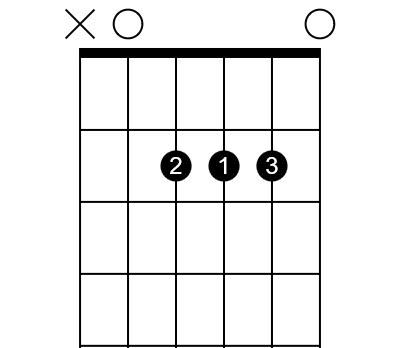
A major consists of the notes A, C#, and E. Notice in the chord chart that the C# falls under the third finger at fret two of the B string. This is the note that we will replace with either the 2nd or the 4th in order to create the sus chord we want.
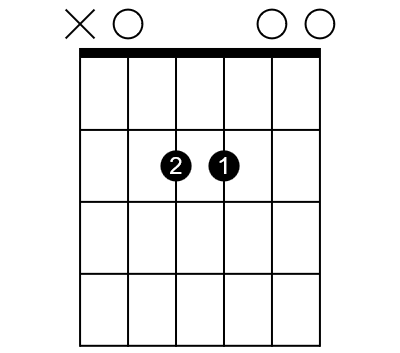
You’ll find that the A shape is one of the easiest shapes to transform into a sus chord because the notes you need are easily accessible.
To create an A sus 2 chord (you’ll normally see it in chord charts as Asus2) you just need to lift your ring finger and let the open B string ring out. B is the 2nd degree of the A major scale. Lifting the ring finger replaces the C# with the B, and that’s your Asus2 chord.
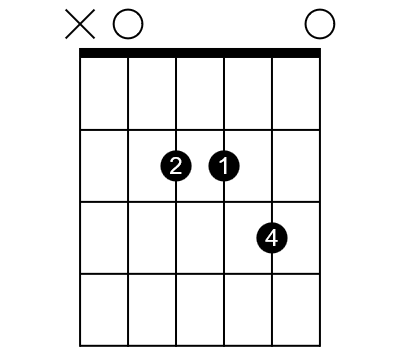
An Asus4 is nearly as easy to create. For this, just use your pinky to play the D note that is one fret above the C# on the B string. Technically you don’t event need to lift your ring finger which makes it super easy to switch between the Asus4 and A major chords.
Practice playing these two chords and switching back and forth from them and the A major chord. Listen for the satisfying resolution of the tension from the sus chord to the major. The resolution is especially satisfying when you move from the Asus4 to the A major.
The D suspended chords
Similar to the A sus chords, the D sus chords are easy to make. The notes of the D major chord are D, F#, and A. The F# is the 3rd, and so it’s that note you’ll need to replace to create your sus chords.
For the Dsus2, you’ll play an E instead of the F#, so just remove your ring finger to let the open High E ring out.
For the Dsus4, use your pinky to play the G note at fret 3 of the High E string.
Here are the chord diagrams for all three of these chords.

D Major 
Dsus2 
Dsus4
Play these three chords one after another starting with the Dsus2, then the D, then the Dsus4. Play each of them for an 8th note value in a 4/4 time signature and let that Dsus4 ring out for the remainder of the measure. If you’re doing it correctly, you might recognize this little passage as part of the lead in to the solo of Led Zeppelin’s Stairway to Heaven.
That’s just one song of countless popular tunes you’ve heard suspended chords in!
The C suspended chords
You can also reach both the Csus2 and Csus4 chords with minimal effort from the C major chord. C major is made up of the notes C, E, and G. The third is E, so that’s the note you need to replace.
For Csus2, lift your ring finger and let the open D play. For the Csus4, use your pinky to play the F note on fret 3 of the D string.
But there’s one complication with these two chords. The C major chord has two E notes. And while the fingering I mention above eliminates one of them, you also need to eliminate the other or you won’t have a true sus chord.
The second E note is the open High E string. The easiest way to eliminate it is to simply not strum it. If you’re having trouble avoiding it though, you could try letting your pointer touch it slightly. Not hard enough to press it down. Just enough to deaden the sound.
Here are the chord diagrams for the three chords.

C major 
Csus2 
Csus4
The E suspended chords
As you’ve seen, with the A, D, and C chord groups it’s easy to make both suspended chords. But the E shapes present a bit of a problem.
The notes of the E major chord are E, G#, and B. Notice in the E major chord shape, you play that G# with your pointer at fret 1 of the G string.
You probably noticed that in each case so far the drop from the major 3rd to the 2nd is a whole step. Translated to guitar, that means we drop the note two frets. And that’s always the case
Since for E major the third sits at the first fret, we can’t drop that note far enough to reach the F# we need for the Esus2. But we can find an F# at fret 4 of the A string. Reach up with your pinky to play that note.
However, you also have to omit that G#. The easiest way to do this is to let your pinky slightly touch the G string to “deaden” it so it doesn’t ring. For a beginner, that might not be easy.
There are several other ways you could create an Esus2, and maybe you can experiment to find one you like better. Just make sure to replace the G# with and F#.
Luckily the Esus4 is easier to find. Use your pinky at fret 2 of the G string to replace the G# with an A. It might be a little uncomfortable to squeeze all three fingers into consecutive strings at fret 2, but you can do it. You can also use a fingering similar to that you use for A major to accomplish the task.
Here are the three chord diagrams.

E major 
Esus2 
Esus4
The G suspended chords
Similar to the E group, the G group doesn’t provide a simple way to play a Gsus2. The notes of the G major chord are G, B, and D. So we need to replace that B with an A.
You can easily do this by lifting your ring finger from fret 2 of the A string. But the G major chord has another B note in it and we have to eliminate that note too, or we won’t have a suspended chord.
To do this, you can touch the B string lightly with your pointer to deaden the sound of it. This can be tricky, especially for beginner guitarists.
Given this, Gsus2 isn’t really all that common on guitar. There are other fingerings you could try. Just remember that you need to eliminate both B notes and add at least one A note to make a Gsus2.
You have a similar problem with making a Gsus4. While you can easily replace the open B note with a C note at fret 1 of the B string with your pointer, you still have to eliminate the B at fret 2 of the A string or you don’t actually have a Gsus4.
You can do this by releasing the pressure from your middle finger on the A string but let it still touch the string to deaden it. Again, this isn’t that easy to do in practice.
Honestly, though, you can cheat on this one and leave that lower B in the chord and no one will mind! Even though it’s not technically a Gsus4, you’ll still get a very strong sense of Gsus4 even with that low B note still in the chord. You can also just strum the thinnest four strings to play a real Gsus4.
Here are the three chord diagrams.

G major 
Gsus2 
Gsus4
How do you use a sus chord?
Like pretty much everything else about music, you can use a sus chord any way you like. Whatever sounds good is fair game. Still, of course there are some guidelines to get you started.
Replace your major chord
Suspended chords make great embellishments that you can use to replace your major chord. For instance, say you have a song in which you have four consecutive measures of an A major chord. That could get to be a little boring after a while.
Instead of playing a straight A major through those four measures, you might try throwing in a sus chord or two. You don’t have to stay on them long. Just switch to an Asus4 for a beat or two and then back to your A. Or run through both your sus2 and sus4 and then land back on the major chord.
It won’t always be appropriate to do this, but it will be quite often, so try it and see what you come up with.
Create tension and release
Because suspended chords have no third, they’re a bit mysterious. They’re ambiguous and leave your listener not knowing for sure whether you’re in a major key or a minor key. This makes them super interesting.
But they are also full of tension. With a sus2, you’re playing the 1st and 2nd scale degrees simultaneously, and that’s not a very comfortable interval.
In the same way, with a sus4, you’re playing the 4th and the 5th scale degrees. That’s also a somewhat uncomfortable interval.
So when you play suspended chords, you create tension. And with tension come interesting sounds. When you resolve this tension by moving back to the major (or minor) chord, the listener experiences a sense of relief. All of this leads to more interesting and more enjoyable music.
Advanced usage of the sus chord
I’ve only talked here about the most common types of the sus chord. As you might suspect, there’s more to the story. Music theory can take you deeper into the subject.
I won’t go deeper here, but perhaps a follow-up article can look at some of the more advanced uses of the sus chord.
Conclusion
When you replace the 3rd-degree note of a major or minor chord with the 2nd- or the 4th-degree notes, you create a suspended chord.
These chords are pleasing and interesting. They’re mysterious because they are neither major nor minor. And they’re inherently filled with tension. This tension resolves beautifully back to the major or minor chord.
All of the open major chords enable easy ways to get to either or both of the sus2 and sus4 chords.
You can use suspended chords to add interest to your chord progressions. You can substitute them for the major or minor chords sometimes, or use them to move a song along in interesting ways.




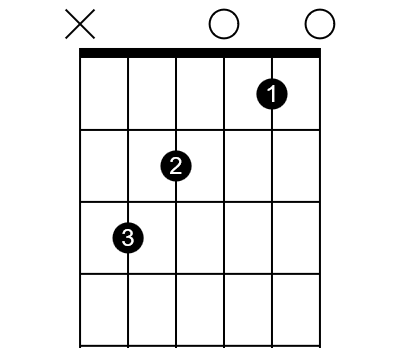

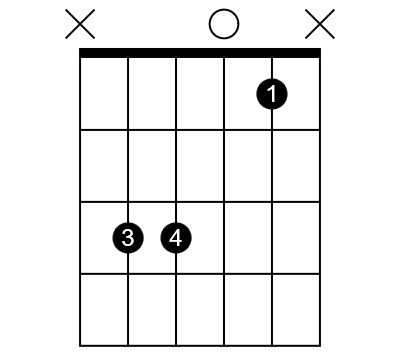

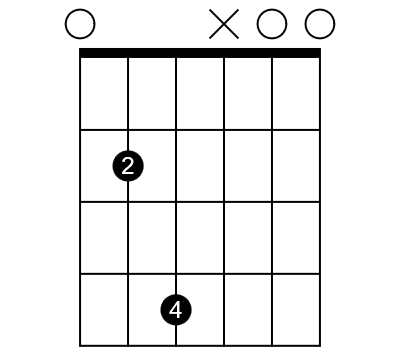
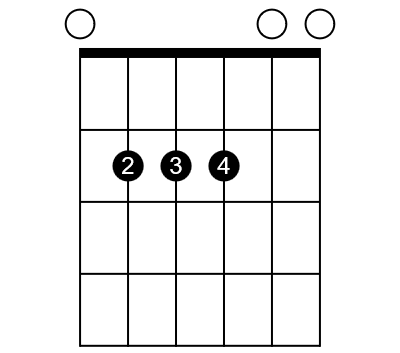
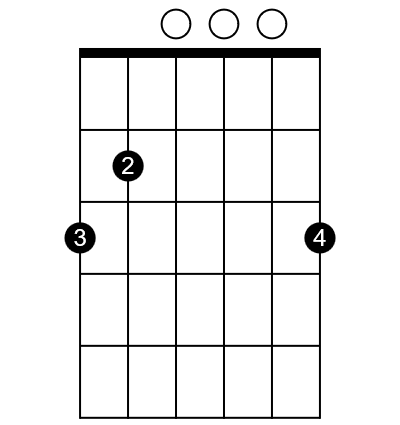


“What are the fundamental characteristics of a sus chord and what are its practical applications in music theory and composition?”